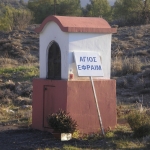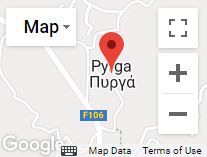Churches
Agias Marinas
The Old Church of St Marina is located in the south of the village. It was built in the 12 th century and retains a domed roof and a narthex (porch) that was added later on.
Several half worn-out frescoes are preserved in its dome. It is to this mediaeval church that community’s new church owes its name.
Today the church of Agia Marina is being repaired, the expenses paid by the Antiquities Department, the Local Land Authority of Pyrga, and donations by the “Leventio Paraskevaidio” centre and other faithful.
In the church’s rear side stands the village’s first spring, through which the entire village was supplied with water in old times. In 1951 some water-supply projects were and the village’s water supply was made easier by a second spring.
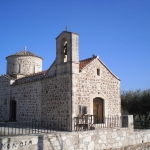
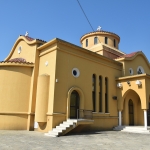
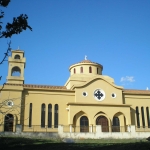
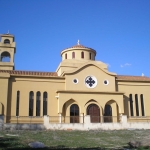
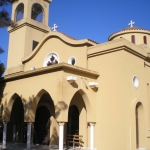
Agias Aikaterinis
An Important mediaeval monument of the village is the extant small church that -according to the local tradition -is dedicated to “Agia Aikaterine” (St. Catherine). This church is better known as “Vasiliko pareklisi” (Royal chapel).
The Royal CHAPEL of St. Catherine was built in the beginning of the 15 th century. It is of the Gothic style from the 14 th century (when the decline of Gothic art started).
It has a rectangular shape with three entrances and an arched roof that stands upon three reinforcement layers. It is made with volcanic rocks, mainly reddish and green ones that were gathered from the surrounding area. Many frescoes are extant in the interior, upon the dome and the walls. The church of St. Catherine is one of today’s most interesting relics of the Lusignan kingdom in Cyprus.
Next to St. Catherine’s church stands the new church of “Agia Marina” that was built in recent years.
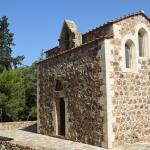
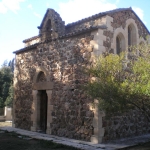
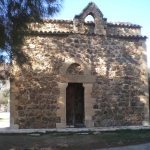
Monasteries
Stavronouni
TOPOGRAPHIC POSITION
Upon a panoramic mountaintop of Cyprus, like a giant eyrie placed by the hand of Hod, for centuries now at the top of the elevated and precipitous mount Olympus, the renowned since old times and exclusive Holy Monastery of Stavrovouni imposingly rises. It is also located in the Troodos mountain range where many and the most beautiful monasteries of Cyprus are.
It is built on a rough mountain, at the centre of south-east Cyprus and upon an isolated mountaintop as if at the peak of a steeple, no other neighbouring top being able to overshadow it with its height or with its volume. This mountaintop, with an average altitude of about 700 meters, makes the Monastery prominent, providing to every visitor an excellent and majestic view toward every direction.
Gazing over to the north-east and beyond, to the East, the eye embraces the fertile valley of Mesaoria, with its picturesque villages glowing under the hot sun of Cyprus and -a bit further down -the city of Ammochostos (Famagusta) surrounded by the sea. Other times, when the fog gathers its dim veil, you are able to see the boundaries of outer Karpasia in the background.
You can indulge in the sun-drenched valley that spreads clearly from the foothills of Stavrovouni and extends up to Larnaca and the Salt-lakes, and going up to the limits of the Limassol district further west. In the background one’s glance toys in the deep blue Mediterranean sea up to the mountains of Lebanon.
The West holds a different perspective: The mountaintops of the massive Troodos mountain range “bathing” in the island’s opulent light, folding away and pulling back, leading the eye toward the mountains of Machairas.
It is in this wonderful location that the Holy Cross wanted to stand and be erected as an altar for the Crucified Jesus; and the Cross permanently stands upon this height, having its Monastery as its favourite footstool. Up here the quadripartite Cross of Christ uninterruptedly blesses the four corners of the “Island of Saints” and shields the blessed inhabitants of this blissful land with its immaculate Grace.
THE MONASTERY’S HISTORY IN PERIODS
The historical course of the Stavrovouni Monastery was -from the very beginning -tightly interwoven with the fate of the much-afflicted island of Cyprus. The Monastery, renowned, prestigious, and situated close to the great harbour of the Salt-lakes (of Larnaca), has always been a target for the island’s various invaders and conquerors.
It is established in 327/328 AD -with the onset of the Byzantine era -by the queen mother “Agia Eleni” (St. Helen), during her journey of return from Jerusalem to Constantinople when she moored in Cyprus; it gets inhabited by Orthodox Monks, keepers of the venerable relics that the saint and empress dedicated to it.
During the Frank Domination era, the Monastery comes under the papal Benedictine Monks for about two centuries.
The Monastery suffers great damages with the island’s occupation by the Turks, being inhabited by Orthodox Monks once again a bit later.
When the British Domination era begins it is manned by Cypriot Monks from Mount Athos, which recondition it and convey to it the “coenobitic” (communal monastic) institution in accordance to the standards of Mount Athos’s Monks.
Therefore, according to the historical data above, the division of the Monastery’s history in the following periods is deemed reasonable:
• First Period: Byzantine Years (327-1191 AD)
• Second Period: a) Frank Domination era (1192-1570 AD)
b) Turkish Domination era (1570-1878 AD)
3. Third Period: a) British Domination era (1878-1960 AD)
b) Independence (1960-today)
THE ANCIENT STATUETTE IN TODAY’S MOUNTAIN OF STAVROVOUNI. THE NAME OF THE MOUNTAIN.
According to tradition, there was a pre-Christian pagan temple at the top of the Stavrovouni Mountain and in the position of the Church of today’s Monastery. This tradition is reinforced both by the mountain’s original name, Olympus (a name that will be discussed further below), as well as by the habit of the days that Christianity prevailed, to raise Christian Churches in the place of pagan idols.
Two limestone statuettes found in the Monastery’s area are an additional testimony in favour of this fact.
Furthermore, the presence of humans during the pre-Christian times in the region, a region which the Monastery today occupies, is witnessed by a recent discovery: A copper-made ploughshare of the Later Bronze era, which dates back to 1200 BC (Photo pg. 12), identical to corresponding ploughshares that were found in Egkomi of Famagusta.
The name Olympus, which is a pre-Hellenic, Pelasgic word, evidently originates from the name of the famous mountain in Greece and is imported in Cyprus during the descend of the Greek Tribes.
The pen of the -inspired by God -St. Neophytos the Recluse (Neophytos o Englistos), while writing his book “Typiki Diathiki”, while referring to the mountain of Stavrovouni, which is geographically placed right across from his village, Lefkara, calls it “mount of Olympus”. He is the first to make the connection of the mountain’s name with the existence of a Monastery on it, in the Church of which a piece from the Holy Cross was kept.
The naming of Stavrovouni as Olympus continues through the Mediaeval times.
At the same time, at least since the beginning of the Frank Domination era, because of the venerable relic in the Monastery, the name Oros tou Agiou (or Timiou) Stavrou (Mount of the Holy Cross) begins to coexist. However, in order to justify the ancient name of mount Olympus, the name “Olympas” was fabricated as that of the Thief that was placed in the right side of Christ; his Cross was also granted by St Helen to the Church that she founded there.
THE FOUNDING OF THE CHURCH OF THE HOLY CROSS BY ST. HELEN IN THE MOUNT OF OLYMPUS.
The founding of the Church of the Holy Cross in the mountain of Olympus (Stavrovouni) is tightly interwoven, according to tradition, with the queen mother St. Helen’s journey for the purpose of recovering the Holy Cross and the raising of Churches in the Holy Land.
That was also the desire of her son, Constantine the Great, although Helen herself also had seen a vision urging her to this purpose.
Despite her age -she was then 78 years old -she begins the mission of locating, re-erecting, and making known the Holy Land with the zeal of a young person.
After many adventures St Helen discovers the three Crosses, that of the Lord and the ones of the two thieves, as well as the nails with which the Lord was crucified upon the Cross. The recognition of the Holy Cross was made possible through this miracle: A dead woman was being carried to her place of burial. The Archbishop St. Makarios ordered the cortege to pause. After fervent prayer and by placing the three Crosses upon the dead successively and separately, she was resurrected after being touched by the third Cross. The Lord’s Cross! St Helen then ordered to split the Cross in two -vertically -so as to create two Crosses. The one she left in Jerusalem, the other she carried with her in a journey from Jerusalem to Constantinople. Tradition has it that it is pieces out of that second Cross that she left in places.
As far as the two other Crosses that belonged to the thieves, because the Saint could not distinguish which of the two belonged to the Good Thief “on the right” and which to the one “in the left”, thinking that by being buried along with Christ’s Cross for so long they must have also been blessed and should not be neglected, she ordered their disassembly and then formed two new Crosses by exchanging their horizontal wooden parts. In that way each of them comprised a segment from the Good Thief’s Cross. If this version is considered correct then we must conclude that St. Helen granted one of those two Crosses to the Church of Stavrovouni.
According to tradition, Cyprus was plagued by a terrible drought at the time (it had not rained for 36 consecutive years), which caused infectious diseases while the island had filled with deadly snakes. This calamity drove many of inhabitants to migration in other places so as to be able to survive.
An Angel of God appeared while the Saint was sleeping and told her that it was the will of God that she would also raise Churches in Cyprus, to which she should grant pieces of the Holy Cross so that the Lord’s Cross would be honoured here as well. A miracle then occurred and through divine force the Holy Cross was transported to the top of the Olympus mountain, today’s Stavrovouni, indicating to the Saint the position where she should a Church in its honour.
Indeed, the humble empress came to the mountaintop personally and -with the aid of some inhabitants from the surrounding regions as well as her own people -she abolishes the pre-existing pagan temple and raises a Church for the glory of the true God. To this original Church she dedicated the one of the two Crosses of the thieves, placing in its centre a piece from the Holy Cross’s wood, as well as a sanctified nail.
According to the same tradition, St. Helen raised other Churches in the island (e.g. the one in Tochni), also endowing them with pieces of the sanctified Symbols of the Lord’s Passion. Also, after her initiative, a ship full of cats is transferred from Asia Minor (since then, the bay in which the ship moored was called Cape of the Cats or “Kavo Gata”), which were let loose in the arid land so as to wipe out the many snakes. Later on, from Constantinople, she showed interest and achieved the return to their island of the Cypriots that had emigrated because of the drought.
The memory of the Queen Mother St. Helen’s passage through Cyprus and the founding by her of the Monastery of the Holy Cross in Stavrovouni is also perpetuated by the inscription upon a stone plate of the Monastery’s “Catholicon” (meaning main Temple, nave).
Frank Domination era (1192 — 1570). During the period of the Frank Domination some of the darkest pages of the History of the much-afflicted Cyprus were written: Captivity, oppression, poverty, infectious diseases, calamities, and deadly epidemics… The Monastery of Stavrovouni, which always took pride in the symbol of Passion and Martyrdom, also suffered along and was tested with the tormented island more than ever before.
Turkish Domination era (1570 –1878). With the capture of Constantinople by the Ottomans (1453) and their various conquests in the regions by the Mediterranean, Cyprus remained like an “outpost” of the Christian West’s conquests in the East. Although the Venetian authorities of Cyprus paid an annual homage to the Ottomans, the island’s conquest by the latter was a question of time. The Ottoman attack against Cyprus in 1570, after an atrocious war that lasted an entire year and with the fall of Famagusta in August of 1571, completed the occupation of the unfortunate island through a nightmarish atmosphere of massacres, plunders, villainies, and catastrophes. For Cyprus, the dark period of Turkish Domination was beginning.
British Domination era (1878 — 1960). In the Summer of 1878, completely unexpectedly, Cyprus’s ruler was changing once again. The declining Ottoman empire, being in dire need of the aid and support of Great Britain, sold the Greek big island to the British. Great Britain, which took possession of the Island with relatively great ease, certainly has many reasons for and abundant interests in this conquest.
As far as the wretched Cypriots were concerned, which of course were not asked at all about this transmission, they initially viewed this event with joy and optimism. The delight and hope of the Greek-Cypriots for a better tomorrow and for the much desired union with the Greek motherland was clearly expressed through Bishop of Kition, Kyprianos Economides, and Archbishop Sofronios, when in July of 1878 they were welcoming the first British Governor of the island. Unfortunately these hopes were soon disproved and the wretched Cypriots understood -quite early -that the conquest by the British meant the beginning of new ordeals for the land.
Period of Independence (1960 — today).
With the end of the struggle for liberation of the Cypriot people in 1959 and the sign up of the Zurich – London accord, Cyprus gains its independence and the Republic of Cyprus is established in 1960.
The fall of the great rock in the east end of the Monastery (1963) and the repair operations from the Antiquities Department in various segments of the Monastery were significant events.For the first time after eight whole centuries, Cyprus gained its freedom. The -small in number -order of the Monastery, with the guidance of Gerontas Germanos , continues “witnessing the Lord” despite the hardships they dealt with due to lack of men.
Widening of the old, narrow road between Agia Varvara and Stavrovouni and its asphalt paving is done in 1979–80.
In 1976 the fathers of the historical Monastery of Apostle Varnavas, after the known catastrophic consequences of the Turkish invasion and being chased away by Attila (the occupation military forces), find refuge in the Stavrovouni Monastery. In 1982 the sudden death of Gerontas Germanos plunges the monastic fraternity into heavy mourning and creates a void that’s hard to fill.
In that same year, through a common vote by the fraternity and the consent of the Metropolitan Bishop of Kition, Chrysostomos, Archimandrite (Dean) Athanasios is enthroned in the Monastery as the new prior.
Since the beginning of his term and because of the order’s steady growth, he provided for and supported the construction of new premises in the Monastery.
Until 1983 the Monastery did not have a connection via telephone line and no electricity either. So he provided for the supply of a telephone network and electric power. Through the supply of electric power it was made possible to also provide water through a drill in the Monastery. The water supply has solved several problems and has aided the realisation of construction operation.
Under the guidance of Prior Athanasios, the 25 members of the Monastery’s fraternity are struggling there best for the achievement of the monastic ideal, having the sense of responsibility toward the valuable, spiritual heritage of the previous fathers.
The Monastery of Stavrovouni is parochial and ecclesiastically it comes under the Holy See of Kition.
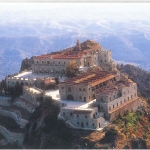
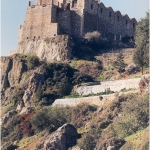
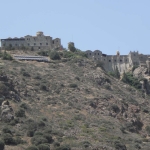
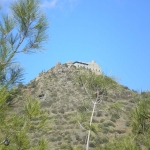
Panagia Stazousa
Taking the country road south-east of the village, across the valley of the tributary river and at a distance of about 4 kilometres, quite close to the village of Klavdia, you will find yourself before the deserted Catholic monastery of “Stazousa” (meaning “dripping one”), which is dedicated to the Virgin Mary.
This isolated monastery, almost unknown to the wider public, is -probably -a 14 th century structure with gothic architecture. It is what is left from a Catholic monastery that, according to C. Enlart, belonged to the Cistercian monks.
It is made with hewed limestone and located at the bank of the river Tremithos. The cells are now deserted but the church with its apses is imposing even though its stone-made internal roof is blackened. It was recently reconditioned by the archaeological museum.
The old, stone-made chapel of “Zoodochos Pigi” is located next to the monastery of “Stazousa” at a lower altitude. It was ruined by landslides from the neighbouring hill and was re-built. Its spring of Holy water is found at the slope of the hill.
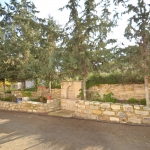
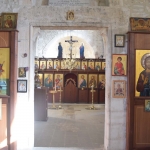
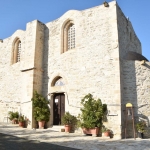
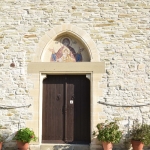
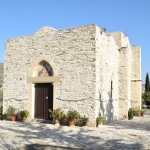
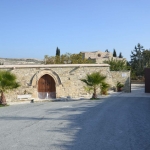
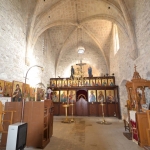
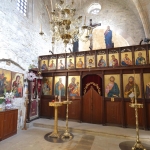
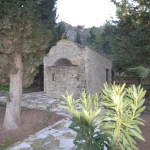
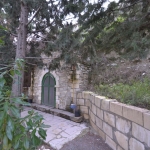
Agios Modestos
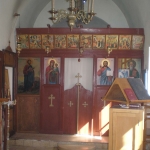
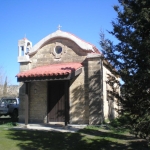
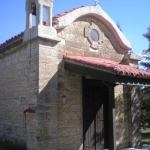
Agia Varvara
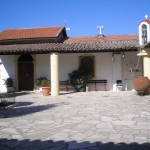
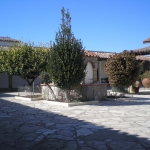
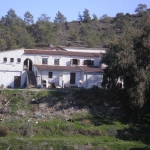
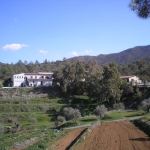
Chapels
Agios Georgios Stratilatis
Toggle Content goes here
Agios Spyridona
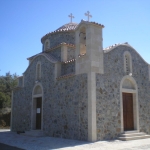
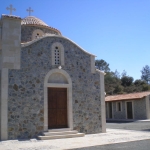
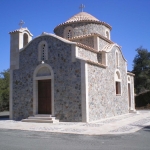
13 Martyrs
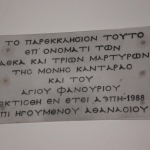
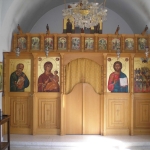
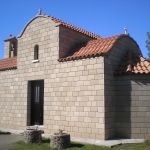
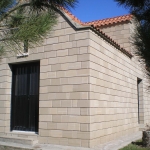
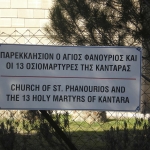
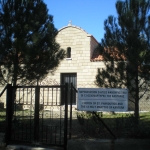
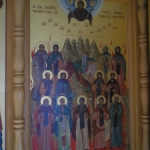
All of Cyprus Martyrs
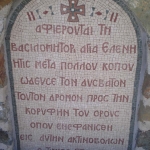
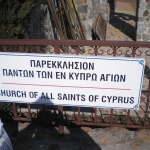
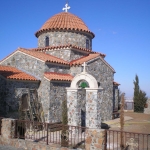
Timiou Prodromou
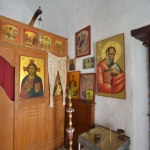
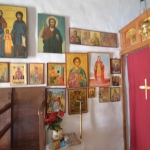
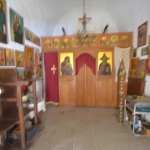
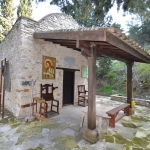
Agios Efraim
